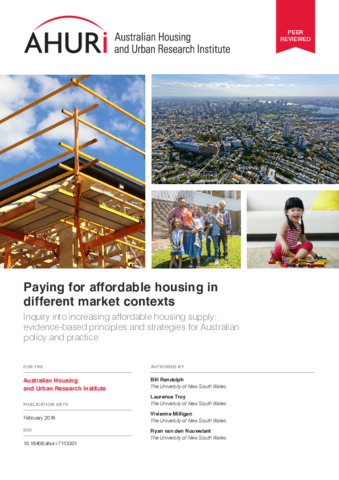In this study six recently completed affordable housing developments across Australia were analysed to ascertain how affordable housing project costs, revenues and subsidies interact to produce affordable housing.
The project data was used to develop an interactive modelling tool, the ‘Affordable Housing Assessment Tool’ (AHAT), which was designed to calculate the impact of different cost and subsidy parameters on the feasability of affordable housing projects.
Six key lessons about financing affordable housing are drawn from the research:
- the importance of government support for access to land
- value of government-retained equity
- need for a fit-for-purpose subsidy (‘gap funding’) to reduce operational losses under private financing
- benefit of mixed tenure and development at scale
- retaining affordable housing and social benefit
- the importance of a needs-based modelling approach to investment decisions
The costs and benefits of supporting affordable housing developments need to be assessed over the long-term. Given that affordable housing is a 30-year plus investment, it is appropriate that its benefits and costs are assessed over a comparable time period. In addition, public subsidies for affordable housing are best directed to not-for-profit developers to ensure that a long-term social benefit is retained.


